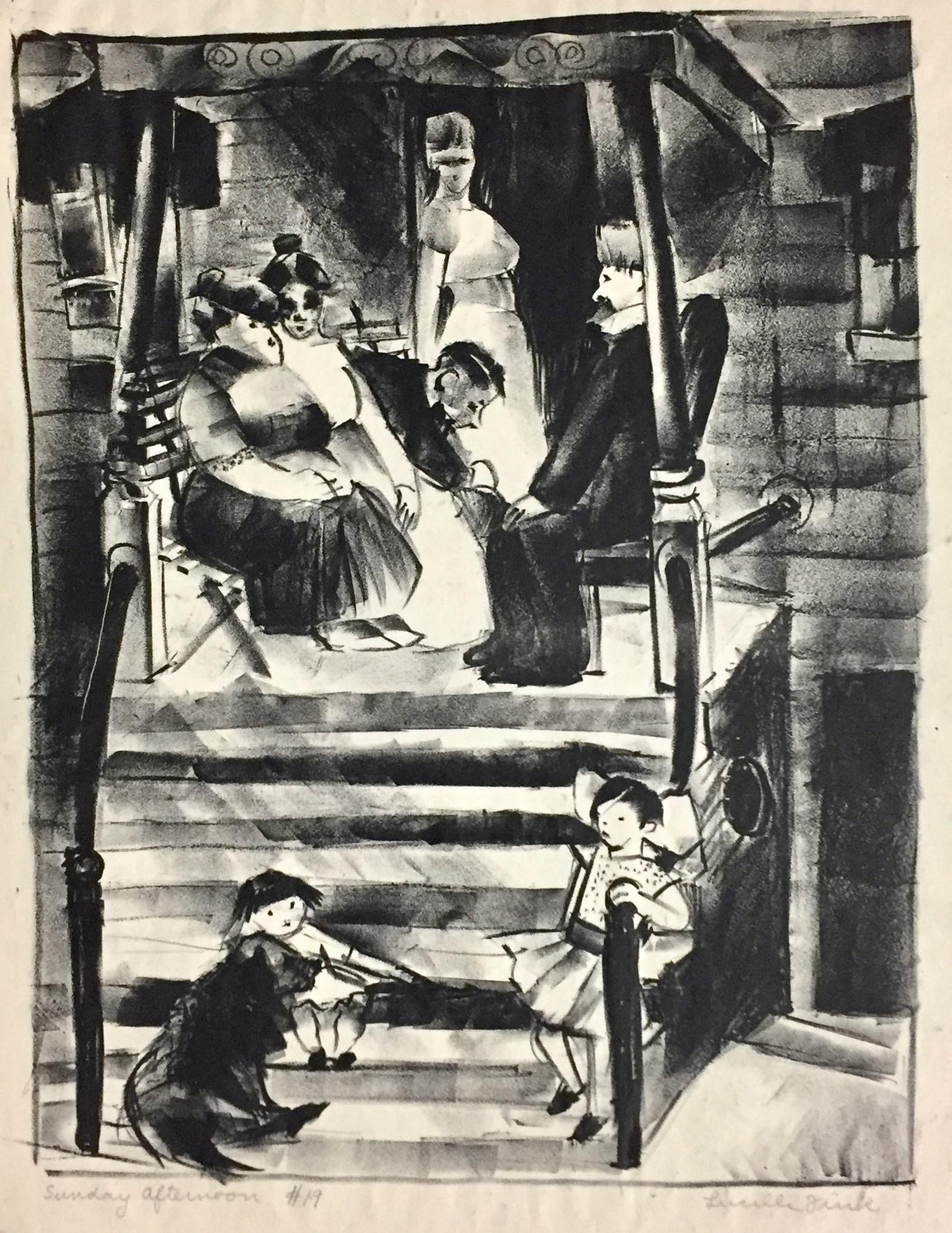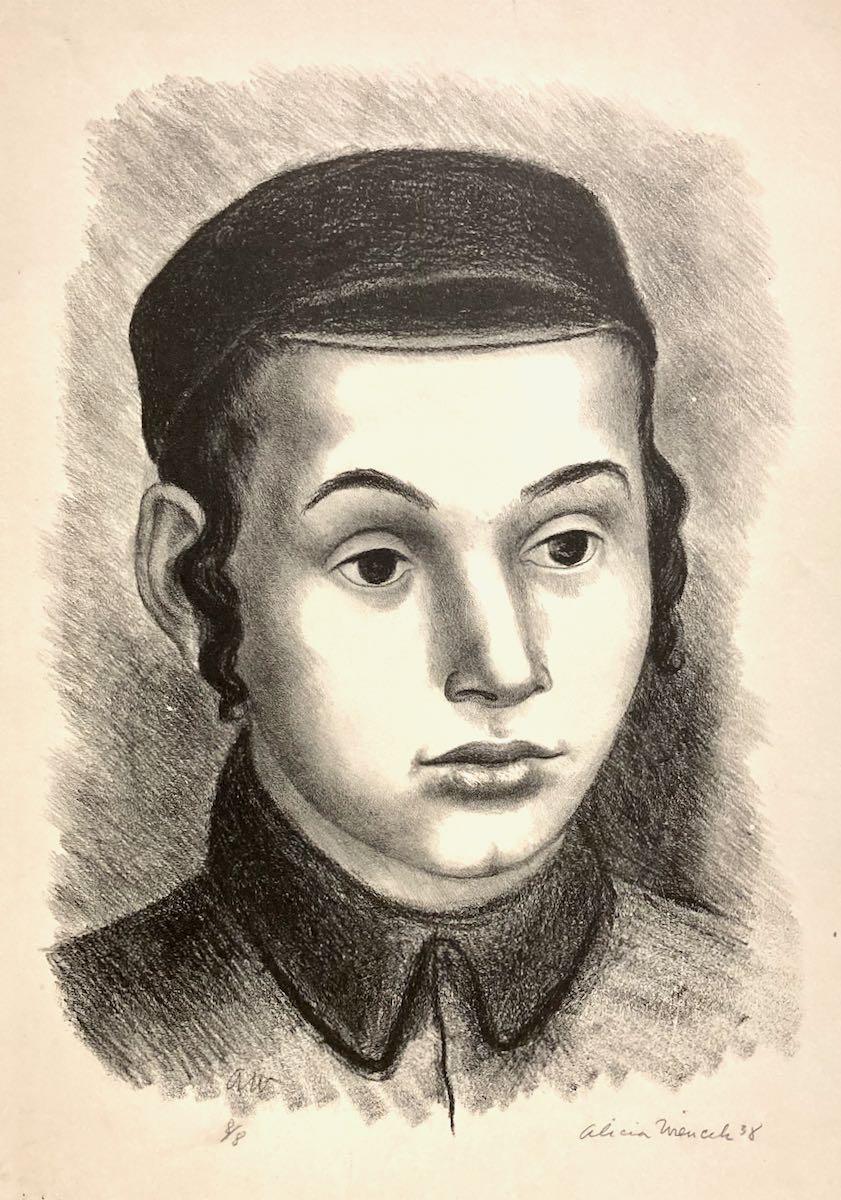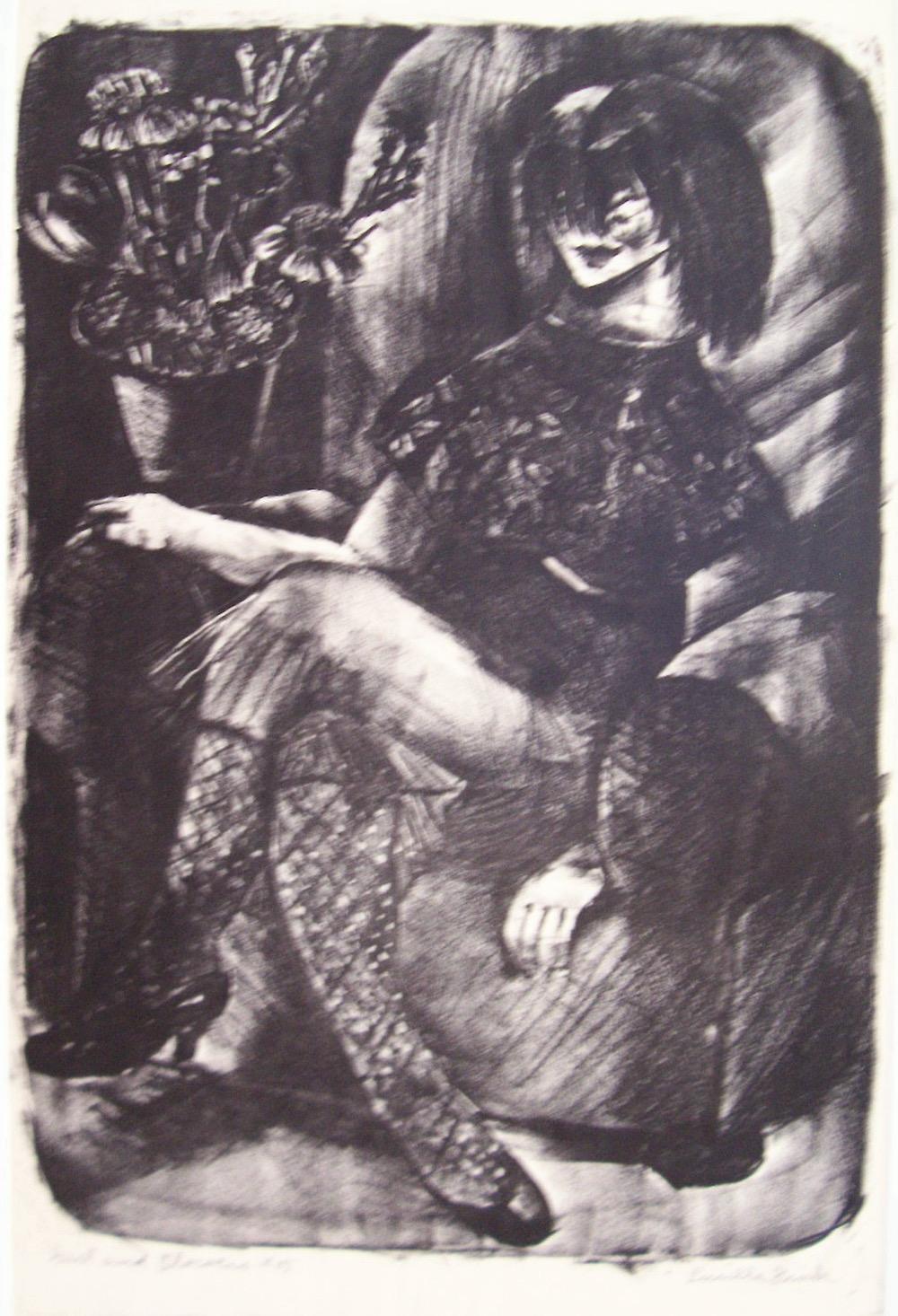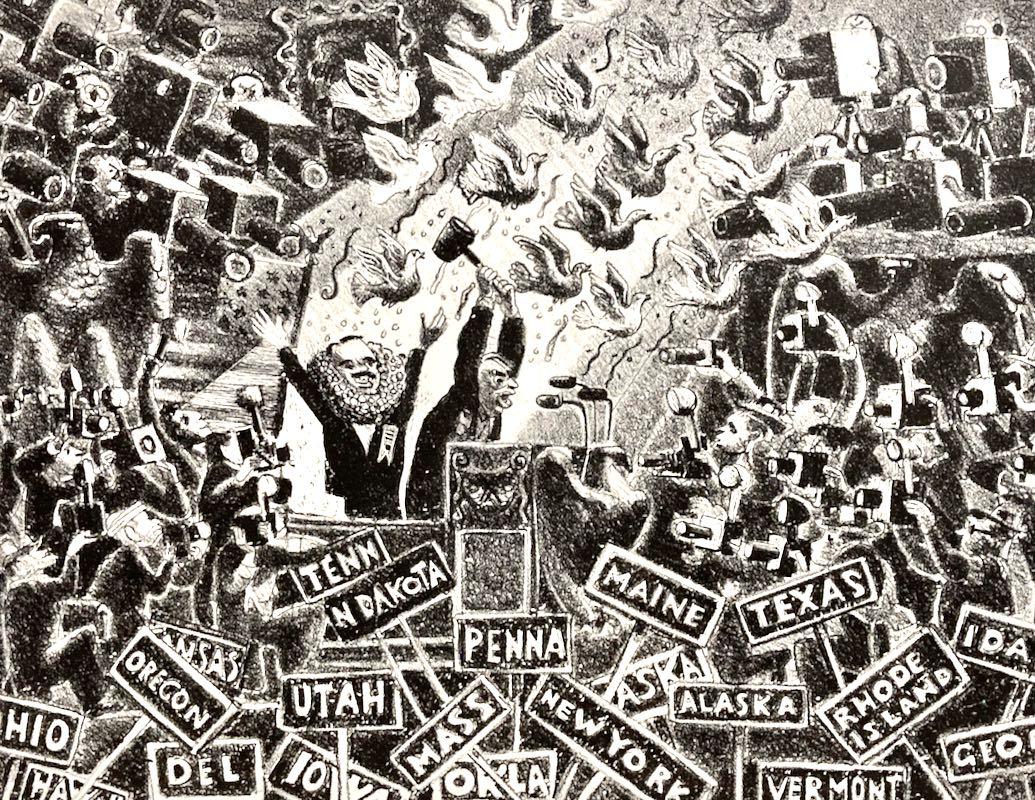Marc ChagallMarc Chagall - The Bible - Paradise - Original Lithograph1960
1960
About the Item
- Creator:Marc Chagall (1887 - 1985, French)
- Creation Year:1960
- Dimensions:Height: 13.98 in (35.5 cm)Width: 10.24 in (26 cm)Depth: 0.04 in (1 mm)
- Medium:
- Movement & Style:
- Period:
- Condition:
- Gallery Location:Collonge Bellerive, Geneve, CH
- Reference Number:1stDibs: LU16121901443
Marc Chagall
Described by art critic Robert Hughes as "the quintessential Jewish artist of the twentieth century," the Russian-French modernist Marc Chagall worked in nearly every artistic medium. Influenced by Symbolism, Fauvism, Cubism and Surrealism, he developed his own distinctive style, combining avant-garde techniques and motifs with elements drawn from Eastern European Jewish folk art.
Born Moishe Segal in 1887, in Belarus (then part of the Russian empire), Chagall is often celebrated for his figurative paintings, but he also produced stained-glass windows for the cathedrals of Reims and Metz, in France; for the United Nations, in New York; and for the Hadassah Hospital in Jerusalem, as well as book illustrations, stage sets, ceramics, tapestries and fine-art prints. Characterized by a bold color palette and whimsical imagery, his works are often narrative, depicting small-village scenes and quotidian moments of peasant life, as in his late painting The Flight into Egypt from 1980.
Before World War I, Chagall traveled between St. Petersburg, Paris and Berlin. When the conflict broke out, he returned to Soviet-occupied Belarus, where he founded the Vitebsk Arts College before leaving again for Paris in 1922. He fled to the United States during World War II but in 1947 returned to France, where he spent the rest of his life. His peripatetic career left its mark on his style, which was distinctly international, incorporating elements from each of the cultures he experienced.
Marc Chagall remains one of the past century’s most respected talents — find his art on 1stDibs.
- ShippingRetrieving quote...Ships From: Collonge Bellerive, Geneve, Switzerland
- Return PolicyA return for this item may be initiated within 7 days of delivery.
- Jean Cocteau - He ! He! Toro - Original LithographBy Jean CocteauLocated in Collonge Bellerive, Geneve, CHOriginal Lithograph by Jean Cocteau Title: He ! He! Toro 1961 Dimensions: 38 x 28 cm Lithograph made for the portfolio "Gitans et Corridas" published by Société de Diffusion Artistiq...Category
1960s Modern Portrait Prints
MaterialsLithograph
- Jean Cocteau (after) - The Toreador - LithographBy Jean CocteauLocated in Collonge Bellerive, Geneve, CHLithograph after a drawing by Jean Cocteau Title: The Toreador 1971 Signed in the plate Dimensions: 38 x 28 cm Lithograph made for the portfolio "Gitans et Corridas" published by Soc...Category
1960s Modern Portrait Prints
MaterialsLithograph
- Jean Cocteau - Europe's Diversity - Original LithographBy Jean CocteauLocated in Collonge Bellerive, Geneve, CHOriginal Lithograph by Jean Cocteau Title: Europe's Diversity Signed in the plate Dimensions: 33 x 46 cm Edition: 200 Luxury print edition from the portfolio of Sciaky 1961 Jean Coc...Category
1960s Modern Portrait Prints
MaterialsLithograph
- After Pablo Picasso - The Dwarf Dancer - Handsigned and Dedicated LithographBy (after) Pablo PicassoLocated in Collonge Bellerive, Geneve, CHAfter Pablo Picasso 1881 - 1973 The Dwarf Dancer (Barcelona Series) - 1966 Framed Offset Color lithograph signed, dated and dedicated at the bottom "For L...Category
1960s Modern Portrait Prints
MaterialsLithograph
- Jean Cocteau - The Picador - Original LithographBy Jean CocteauLocated in Collonge Bellerive, Geneve, CHOriginal Lithograph by Jean Cocteau Title: The Picador 1961 Dimensions: 38 x 28 cm Printed signature Lithograph made for the portfolio "Gitans et Corridas" published by Soc...Category
1960s Modern Portrait Prints
MaterialsLithograph
- Jean Cocteau - Jean Monnet's Vision - Original LithographBy Jean CocteauLocated in Collonge Bellerive, Geneve, CHOriginal Lithograph by Jean Cocteau Title: Jean Monnet's Vision Signed in the stone/printed signature Dimensions: 33 x 46 cm Edition: 200 Luxury print edit...Category
1960s Modern Portrait Prints
MaterialsLithograph
- Vintage SIGNED Kitaj Poster, La Fabbrica, Milan (A Life 1975) woman in red dressBy Ronald Brooks KitajLocated in New York, NYPrinted in 1975, this poster features the encounter between an alluring woman dressed in red, and a man with his back to the viewer. The light of a streetlamp is beautifully imitated...Category
Late 20th Century Modern Figurative Prints
MaterialsLithograph
- Sunday AfternoonBy Lucille FinkLocated in New York, NYLucille Fink creates slightly bizarre, densely drawn spaces. Signed, titled, and numbered '19,' in pencil. Annotated on the reverse, "June, 1932, week of 6-10-32, last wk of school."...Category
Early 20th Century American Modern Figurative Prints
MaterialsLithograph
- Alicia Wiencek Fiene, Jewish StudentBy Alicia Wiencek FieneLocated in New York, NYWork by Alicia Wiencek (Mrs. Edward Fiene) is generally extremely scarce. This print comes up from time to time and was made an actual edition (of 8) at a time when many artists didn...Category
1930s American Modern Portrait Prints
MaterialsLithograph
- Lucille Fink, Girl with FlowersBy Lucille FinkLocated in New York, NYLucille Fink creates densely drawn compositions, often a little off-beat. Signed and titled. Dated on the reverse.Category
Early 20th Century American Modern Figurative Prints
MaterialsLithograph
- Alfred Bendiner, ...And So..., 1948, Republican Convention nominating DeweyBy Alfred BendinerLocated in New York, NYThe full title really should be ...And So I Give Your The Next President of the United States. The scene is the Republican Convention, in Philadelphia, in 1948. There are so many fas...Category
Mid-20th Century American Modern Portrait Prints
MaterialsLithograph
- Joseph Hirsch, BeardBy Joseph HirschLocated in New York, NYJoseph Hirsch had such empathy for his subjects! But he was also an amazingly skilled lithographer who could get extremely delicate details out of the stone. Signed and numbered in p...Category
Mid-20th Century American Modern Figurative Prints
MaterialsLithograph





